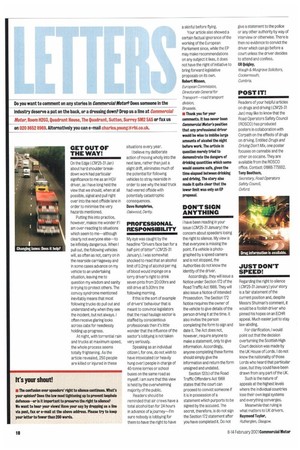DON'T SIGN ANYTHING
Page 20

If you've noticed an error in this article please click here to report it so we can fix it.
I have been reading in your issue (CM25-31January) the concern about speeders losing the right to silence. My view is that everyone is missing the point. If a vehicle is photographed by a speed camera and is not stopped, the Authorities do not know the identity of the driver.
Accordingly, they will issue a Notice under Section 172 of the Road Traffic Act 1988. They will also issue a Notice of Intended Prosecution. The Section 172 Notice requires the owner of the vehicle to give details of the person driving it at the time. It also invites the person completing the form to sign and date it. The Act does not, however, require anyone to make a statement, only to give information. Accordingly, anyone completing these forms should simply give the information and return the form unsigned and undated.
Section 12(b) of the Road Traffic Offenders Act 1988 states that the court can proceed to convict someone if it is in possession of a statement which purports to be signed by the accused. The secret, therefore, is do not sign the Section 172 statement after you have completed it. Do not give a statement to the police or any other authority by way of interview or otherwise. There is then no evidence to convict the driver which can go before a court unless the driver decides to attend and confess.
Waugh &. Musgrave Solicitors, Cockermouth, Cumbria.
































































































